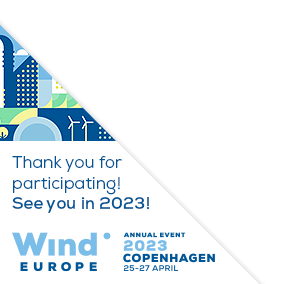Posters
Siblings:
ProceedingsProgrammeSpeakersPostersContent PartnersGlobal Markets TheatreWindTalks for InnovationProgramme Committee & Abstract ReviewersSpeaker's DashboardCome meet the poster presenters to ask them questions and discuss their work
Check the programme for our poster viewing moments. For more details on each poster, click on the poster titles to read the abstract. On Wednesday, 6 April at 15:30-16:15, join us on Level 3 of the Conference area for the Poster Awards!

PO218: Fully automated, physics-based analysis of SCADA temperature signals for drivetrain monitoring
Christopher Gray, CEO, i4SEE TECH GmbH
Abstract
Premature failure of large wind turbine components such as the gearbox or generator can result in expensive downtime and high repair costs. It is well understood that SCADA data can be used as an input to condition monitoring algorithms, and in particular the analysis of trends in temperature signals has been shown as an effective means of detecting incipient faults early, allowing proactive inspection and maintenance to be planned. Due to the dynamic operating characteristics of a wind turbine, including variations in ambient conditions as well as the turbine control, the thermal response of the individual components is relatively complex. Accurate fault detection therefore requires simulation of the turbine in its healthy operational state, and then comparison with measured temperatures in order to identify outliers and deviations. Previous work performed in traditional power generation industries as well as in the wind industry has shown that machine learning techniques such as neural networks can be used to simulate the relationship between input variables and a response variable, providing an efficient solution for signal health monitoring. However, such techniques suffer from some limitations including lack of transparency, the requirement for training sets covering prolonged periods and over-fitting. The present work aims to demonstrate that physics-based models can be used to model the thermal response of many components inside the wind turbine with full transparency, low complexity and extremely high accuracy.










Follow the event on: